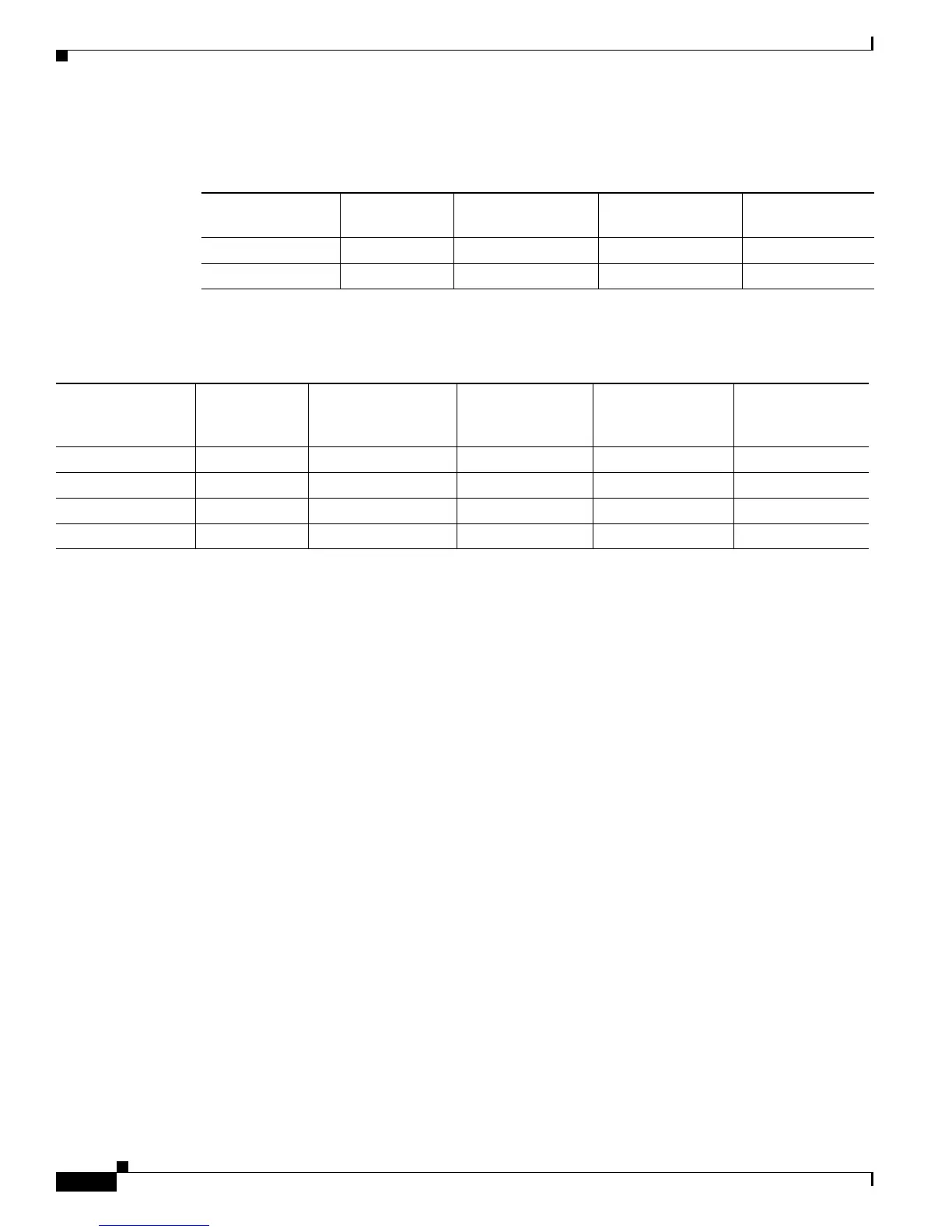36-20
Cisco IE 3000 Switch Software Configuration Guide
OL-13018-03
Chapter 36 Configuring QoS
Configuring Auto-QoS
Table 36-3 shows the generated auto-QoS configuration for the ingress queues.
Table 36-4 shows the generated auto-QoS configuration for the egress queues.
When you enable the auto-QoS feature on the first port, these automatic actions occur:
• QoS is globally enabled (mls qos global configuration command), and other global configuration
commands are added.
• When you enter the auto qos voip cisco-phone interface configuration command on a port at the
edge of the network that is connected to a Cisco IP Phone, the switch enables the trusted boundary
feature. The switch uses the Cisco Discovery Protocol (CDP) to detect the presence or absence of a
Cisco IP Phone. When a Cisco IP Phone is detected, the ingress classification on the port is set to
trust the QoS label received in the packet. The switch also uses policing to determine whether a
packet is in or out of profile and to specify the action on the packet. If the packet does not have a
DSCP value of 24, 26, or 46 or is out of profile, the switch changes the DSCP value to 0. When a
Cisco IP Phone is absent, the ingress classification is set to not trust the QoS label in the packet. The
switch configures ingress and egress queues on the port according to the settings in
Table 36-3 and
Table 36-4. The policing is applied to those traffic matching the policy-map classification before the
switch enables the trust boundary feature.
• When you enter the auto qos voip cisco-softphone interface configuration command on a port at
the edge of the network that is connected to a device running the Cisco SoftPhone, the switch uses
policing to determine whether a packet is in or out of profile and to specify the action on the packet.
If the packet does not have a DSCP value of 24, 26, or 46 or is out of profile, the switch changes the
DSCP value to 0. The switch configures ingress and egress queues on the port according to the
settings in
Table 36-3 and Table 36-4.
• When you enter the auto qos voip trust interface configuration command on a port connected to the
interior of the network, the switch trusts the CoS value for nonrouted ports in ingress packets (the
assumption is that traffic has already been classified by other edge devices). The switch configures
the ingress and egress queues on the port according to the settings in
Table 36-3 and Table 36-4.
For information about the trusted boundary feature, see the “Configuring a Trusted Boundary to
Ensure Port Security” section on page 36-35.
Ta b l e 36-3 Auto-QoS Configuration for the Ingress Queues
Ingress Queue Queue Number CoS-to-Queue Map
Queue Weight
(Bandwidth)
Queue (Buffer)
Size
SRR shared 1 0, 1 81 percent 67 percent
Priority 2 2, 3, 4, 5, 6, 7 19 percent 33 percent
Ta b l e 36-4 Auto-QoS Configuration for the Egress Queues
Egress Queue Queue Number CoS-to-Queue Map
Queue Weight
(Bandwidth)
Queue (Buffer) Size
for Gigabit-Capable
Ports
Queue (Buffer)
Size for 10/100
Ethernet Ports
Priority 1 5 up to100 percent 16 percent 10 percent
SRR shared 2 3, 6, 7 10 percent 6 percent 10 percent
SRR shared 3 2, 4 60 percent 17 percent 26 percent
SRR shared 4 0, 1 20 percent 61 percent 54 percent

